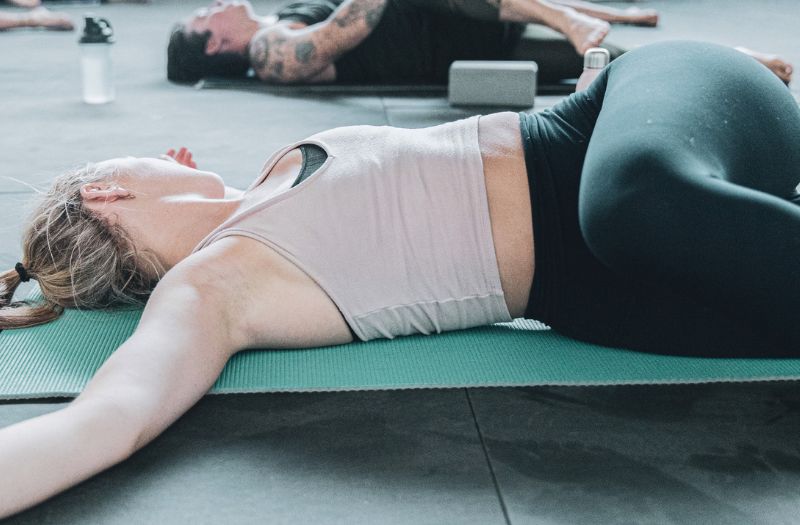Does your back hurt? Stretching can be your ally in keeping back pain away. In this article, we offer some guidelines on how to perform back stretches safely.
Stretching and exercises to mobilize your back are very helpful for reducing the tension that builds up from using poor posture. In this way you can reduce minor discomfort and help prevent chronic low back pain.
In this article, we describe several stretches for the lumbar region of the back that require only a few minutes. But, first, it’s important to remember that if you are going through a recovery process after an injury or other pathology of the lumbar spine, these stretches should be done gently and you need to check with your doctor before doing them, especially if you have undergone surgery.
It is also important to note that these stretches should not be painful; you should feel a gentle stretch or slight discomfort, but not to the point of pain. If you do feel pain during the stretches, you should stop the exercise. With that said, let’s get going!
Stretches for the lower back
1. Place your exercise mat on the floor at the base of the wall. Lie down on your back, raise your legs, keeping your knees bent and feet placed on the wall. Once you're in this position, stretch one of your legs until only the heel touches the wall. It may be a little difficult, especially if you suffer from sciatic pain, so we recommend taking your time before stretching it out completely.
In this position, take a couple of deep breaths and, during one of the breaths, when releasing the air, flex your foot towards your body to intensify the stretch. After 3-5 minutes, stretch the other leg and flex both feet towards your body. Hold that posture for another 5 minutes.
2. From the previous position, place the right foot on the left knee, resting the inner part of the foot on the leg. With your hand, push your right leg toward the wall to open your hip. After a few minutes, remove your hand and try to hold the position just using the strength of the muscle. Make sure your hip is straight.
3. Again from the previous posture, with the right leg placed on the left knee, flex the left leg towards your body. With this you will be able to relax the piriformis muscle, which is involved in sciatica. You will feel a gentle pressure on the abductor. Repeat exercise number 2, and this one, with the other leg.
4. From the same position, press your buttocks to the wall and, with your legs apart, bend your knees and place the soles of your feet flat against the wall (birthing position). Push out on your knees with your hands to open your hips further. Then, little by little, extend your legs straight up against the wall in a “v” shape. You may not be able to do this at first, but with practice your flexibility will increase. Breathe and flex your toes towards you. Repeat for 5 minutes.
5. After the previous exercise, bring your feet down, and bring your knees toward your chest, hugging yourself. Then, spread your knees apart, placing the soles of your feet together. Try to stay centered, without rotating your body to one side or the other. Once you're in place, gently push your knees out to increase the stretch. Stay that way for 3-5 minutes.
6. Now, move away from the wall, and lie down on your back again, bringing your knees up to your chest. Extend your arms sideways with your palms on the ground. Gently roll your knees to one side and hold this pose for a couple of minutes. Repeat on the other side. If you want to intensify the stretch, turn your head in the opposite direction from your legs.

7. Bring your knees back to your chest and hug them. Stay like this for a few minutes and take a few breaths. You can use this moment to gently rock from one side to the other, giving a massage effect to your lower back.
8. To finish, kneel on the mat. Bend forward over your knees and stretch your arms out in front of you with your palms flat on the ground (known as the child’s pose in yoga). Keep your chest close to your knees and extend your arms a little more and more. Stay like this for a couple of minutes.
Other exercises for low back pain
We recommend that you do these exercises on a regular basis as long as you do not find them painful and you have your doctor’s permission if you are in a recovery process. We hope they help relieve your back pain!
If you are interested in participating in some active therapy for the spine, either individually or as a group activity, our team of
specialized physiotherapists and osteopaths at Instituto Clavel Rehabilitation can help you. Do not hesitate to get in touch for more information.
Categories: Prevention, Back pain, Lumbar pain
